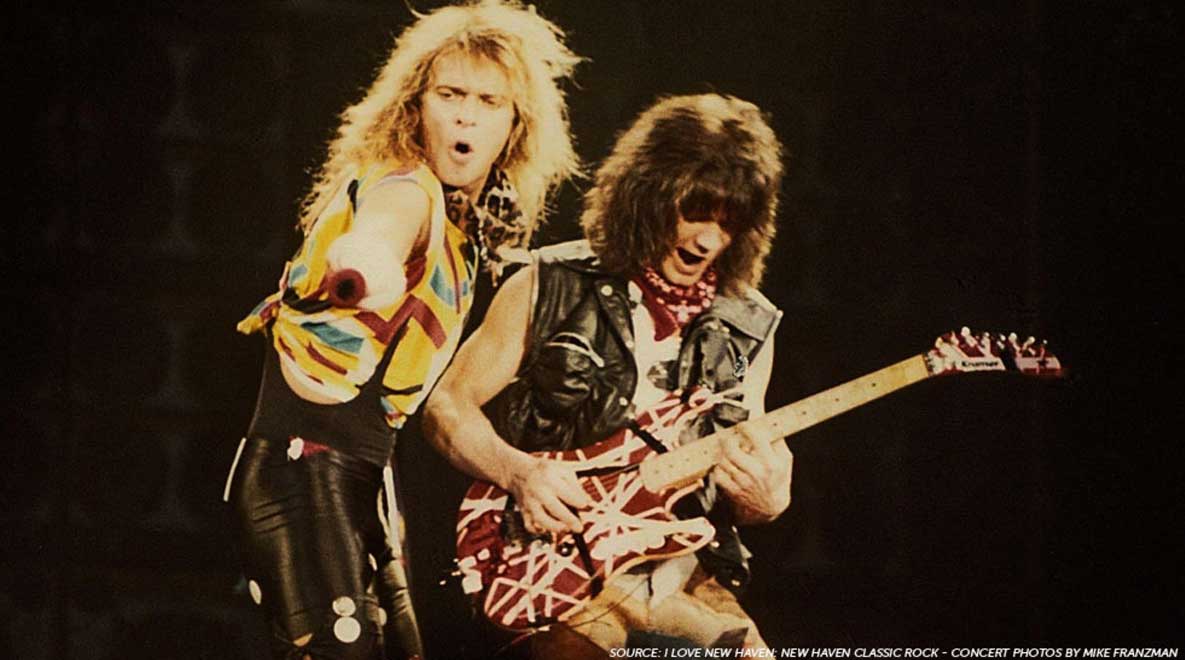Change Management: Those Closest to the Work Know the Work Best
How to use Jack Welch’s process to make change stick
- Companies that are agile will be most successful in an environment where constant, rapid change is the new normal.
- But it’s not really the company that’s agile, it’s the people.
- Those closest to the work know the work best and can help fix things that aren’t working.

Constant, rapid change is the new normal. If nothing else, that’s what we’ve all learned from doing business over the last several years. How we deal with that change will determine our success moving forward. Companies that are more agile will succeed and thrive. But what does that mean? It’s not the company that’s agile, it’s the people.
To improve agility at General Electric (GE), former CEO Jack Welch introduced a simple, but highly effective change program that created huge payoffs. It was so successful for GE that Home Depot, Sears, and General Motors adopted it as well. Welch introduced the “Work-Out” program to foster a culture of openness, collaboration, and continuous improvement within the organization.
No matter the challenge, the Work-Out process relies on four basic principles:
- Bring together the people who know the issues best.
- Challenge them to develop creative solutions.
- Make yes or no decisions on the solutions immediately in a public forum.
- Empower people to carry out the solutions.
At GE and other firms, Work-Out is more than a way to solve problems. It creates an empowered workforce because employees can see their ideas make an impact. It also helps to build a culture of innovation, rather than seeing changes as one-off disruptions.
The methodology didn’t just help GE’s frontline employees, but helped develop leaders who listen to employees and make quick decisions. It brought leaders out of their offices and challenged them to deal with problems hands on. It created agility by democratizing decision making and not leaving it solely in the hands of leaders.
GE’s methodology isn’t considered “revolutionary” because it provides the answers to every question. Rather, it’s a simple concept based on the idea that those closest to the work know the work best and can help to fix things that aren’t working.1
Understanding the Change

The first principle of any change management effort is to know why you need to change. What’s not working? What are your key objectives in fixing it? What will people need to do?
First, you need to understand the benefits of the change and how it will impact people and the way they work. You’ll get faster buy-in from your team if you understand the impact your change has on them and account for it in your plan.2
If it’s a project you intend to do once, let your team know. If you’d like to create a culture of change and innovation, communicate that as well, so everyone knows the direction the company is going. GE’s Work-Out method was designed to promote a culture of innovation and quick action or “systems mindset.” The understanding being that change doesn’t just happen once, or in a vacuum. The system’s objective is to produce fundamental change in the culture and sustain it over time. It empowers employees to think about their behaviors and gives them the tools to change their mindset. With this approach, employees are encouraged to continually identify new opportunities to evolve and improve outcomes.
Dissatisfaction x Desirability x Practicality > Resistance to Change3
Another way to look at it is that for the change to work, there must be enough dissatisfaction with the current way of doing things. Talk to employees who are closest to a perceived problem and get their feedback. This can help your team feel a sense of ownership in a change. Then, help them feel confident that the new approach is practical. They need to believe that the new approach will be better – and that there’s a clear route to get there.2
It can help to reinforce the negative outcomes of not making the change. To create good positioning, you should compare the benefits of the change with the alternatives, particularly that of doing nothing. You can help them understand the benefits of the change by highlighting examples of their dissatisfaction with the current method.
Planning the Change

The purpose of the planning phase is to answer one question: What is the objective of the change in bottom-line business terms?1
In the Work-Out methodology, the goal can be expressed in a SMART goal statement. It must be a Stretch goal that is Measurable, Achievable, Realistic, and Time–related.
A Stretch goal is achievable but not easy. It forces people to think beyond their current performance but isn’t so out of reach that it destroys motivation.
When you’ve identified your goal, estimate its potential bottom-line impact. Then, present to your team with a target that demonstrates the cost-savings or other impact of their changed behavior. You’ll provide motivation and excitement. It’ll also help them see that they’re not just engaging in an exercise. They’re helping put real money on the bottom line.1
Here are some examples of goals that meet the SMART criteria and how they were met:
Reduce downtime by 19% in two weeks
Achieve first 100% audit score
Improve on-time shipping by 40%
Most companies face an identifiable problem with an unidentifiable cause.1 Identifiable problems are typically just symptoms. Be careful not to only treat a symptom that will keep coming back. For example, don’t spend time fixing a machine if the real problem is poor training for the people running the machine.
Remember that those closest to the work know the work best. So, ask them where they’re getting stuck. A lot of times, if you equip your employees with the right tools, they can do their job the right way, every time, and the symptoms disappear.
Those closest to the work know the work best.
Here are five ways to help you identify business issues to pursue:
- Identify performance gaps between your goals and the business reality using your key performance measures
- Interview those involved in or most impacted, both internally and externally, by the problem you’re solving. This can clarify expectations and identify bottlenecks or other areas for improvement
- Meet with managers of other areas to review processes that cut across functional boundaries
- Benchmark performance against other similar processes and/or the industry average
- Ask employees what’s slowing them down or making the process more arduous
Make sure the business problem is important and urgent, not just a nice idea. At GE, for something to qualify as a Work-Out target, the objective must be an improvement in actual performance, like a 19% reduction in downtime, not a broad area like “improving training.”
Just as important to planning is identifying a sponsor. How will you secure, engage, and use high-level support to champion the change? This person will remind other executives of the underlying business struggle and be pivotal in driving the cultural change. When there is pushback in implementing the change, the executive sponsor can help reinforce the “why” behind it.
Implementing the Change

Once you’ve approved the change, it’s time to put your plan into action. The Work-Out methodology outlines four elements of implementation to succeed:
- Make accountability stick – immediately confirm who will be responsible for implementing each recommendation at the grass roots level. Pull together the team – executive sponsor, managers, etc. – who will be on the hook for the recommended change over the next 8-12 weeks.
- Move immediately into work planning – all action steps must be assigned and given deadlines. One individual should be accountable for each idea.
- Manage the organization’s cycle of energy – people will encounter all forms of resistance to change. Some will be subtle and some not. Executive sponsors should support and coach managers through these difficulties.
- Provide management oversight and support – some goals have a clear scope and narrow focus while others don’t. Others may involve making major progress on a complex issue in a short amount of time.
With your appointed change agents in place and success criteria defined, it’s time to change! You’ll need to find ways to transform people’s habits so that the new practices become the norm.2
The Work Out method suggests that you “[b]egin at a comfort level that will enable you to demonstrate the benefits to be gained. Often that means starting with a pilot test at a site where you can start right away. The site should also be isolated from the rest of the business, so that leaders have the authority to enact recommendations and see the results clearly.”1
That’s how one of our clients, the world’s largest brewer, approached their plan to eventually standardize and accelerate performance worldwide. They started with a champion who identified executive sponsors who supported the idea and were willing to get involved to ensure the changes stuck.
They started with a small pilot in one brewery and clear KPIs they could prove out. They had a plan for how to scale from there if it was successful.
At the first location, they put One Best Way work procedures in the hands of their frontline employees. The digital task lists were easy to follow to complete each critical process.
The result of making work instructions easily accessible and holding employees accountable to them meant fewer mistakes were made. The employees found it easier to do their jobs right the first time. There was less rework and less waste. Operations costs dropped and product quality became more reliable.
By the end of the six-month pilot, the plant had increased and sustained gross line yield. The amazing thing was that the same held true for every plant they moved to after that first trial.
Communicating the Change

Good communication can make or break change management. Inspiring trust and strong communication at every stage is critical. Make sure the change you want to make is clear and relevant. Those who will implement the change should understand what you want them to do and why they need to do it. This is harder than it seems and requires the right tools to do it well.
The ADKAR Change Management Model outlines five things to address in your communication:
Awareness (of the need for change)
Building in enough executive support will help your teams work across functions and boundaries.1
Auditable acknowledgements alert employees of a new process change and track when they have reviewed the changes.
Desire (to participate in and support it)
The best way to get buy-in from skeptics is to prove how well it works. Jack Welch highlighted his commitment to Work-Out in annual reports, speeches, media interviews, employee videos, and more. 1
Make it easy for them to participate in the change by making critical information easily available while the work is being done. Then, send out direct communications to everyone in the organization to celebrate when goals are met.
Give your teams the chance to provide feedback as well. Capturing employee feedback that’s specific to tasks they’re working on can help improve procedures and engagement. They’ll have a greater desire to participate in something they can take ownership of.
Knowledge (of how to change)
Communicate a clear and relevant plan for how your employees will execute the change plan.
Create documents with updated procedures, including multimedia job aids that guide the activity. Make sure the procedures are easy to access no matter where the employees do their work.
Ability (to change)
Provide your teams with the resources they need and enough time for frontline employees to participate so the change doesn’t come off as a burden or extra work. 1
Employees who complete critical tasks by following checklists make fewer mistakes and work more efficiently.
Reinforcement (to sustain the change in the long term)
You want your changes to stick. Quizzes can create awareness of important information for your employees and reinforce critical points you want to stick. Managers can also use evaluations to assess employee comprehension of process changes and identify who needs additional support.
As a leader in the initiative, make sure your actions demonstrate your high level of commitment. Passing the program off to someone else won’t work.
Finally, share the knowledge you gain! Share new and better ideas for ways to increase productivity, cutting costs, and so on that might be useful to other parts of your organization.1
Anticipating bumps in the road

Even the best-laid plans can suffer setbacks. So, be prepared for problems when they arise. Demonstrating successes can ease some resistance, but until then, find ways to reward flexibility and repeat key messages until acceptance improves.1
Remember that some resistance might not have anything to do with attitude at all. For example, if there is technological resistance, you might have employees struggling with computer literacy. Include time and training for those who might need it.
The impact of change in action
Our client, a large global industrial company, wanted to create a unified customer experience across its 12 regional shared services groups. Its existing Order-to-Cash process was different in each region, making it difficult for clients, sales, and finance to follow when orders spanned geographies. The confusion was slowing the company’s ability to recognize revenue. Everyone involved was clear that a change needed to be made.
To unite the services groups under one process, executives deployed Acadia as its single source of truth. Managers trained their teams on new policies and procedures by walking them through on Acadia. The teams then had access to Acadia as they went about their daily activities. They followed procedures using tasks lists, providing visibility to managers. Those who weren’t compliant were identified and provided with additional training.
The impact of the change became apparent quickly as each group began using the new procedures, their orders went more smoothly and converted to revenue faster. Managers and executives trumpeted success and it soon became a movement across the company.
Since the initial Acadia deployment, the company has continued to see reduced errors, rework, and disputes in the O2C process. Most importantly, their customers are happier with the service they receive across all touch points.
Empowering people to carry out solutions

No matter the methodology you choose to follow, the right tools can make it possible for you to achieve extraordinary results.
Employees who feel they’re part of creating improvements in work processes will take ownership of them. They’ll see change management as something there to help them instead of something to control them.
Acadia provides a solution to help facilitate every aspect of your change. It also ensures you have the visibility to maintain your positive results over time.
Are you looking to improve onboarding or cross train your teams? What about making your production environment more efficient? If you’d like help identifying key issues in your business, reach out.
Sources:
Ready to crush your goals?
"*" indicates required fields


